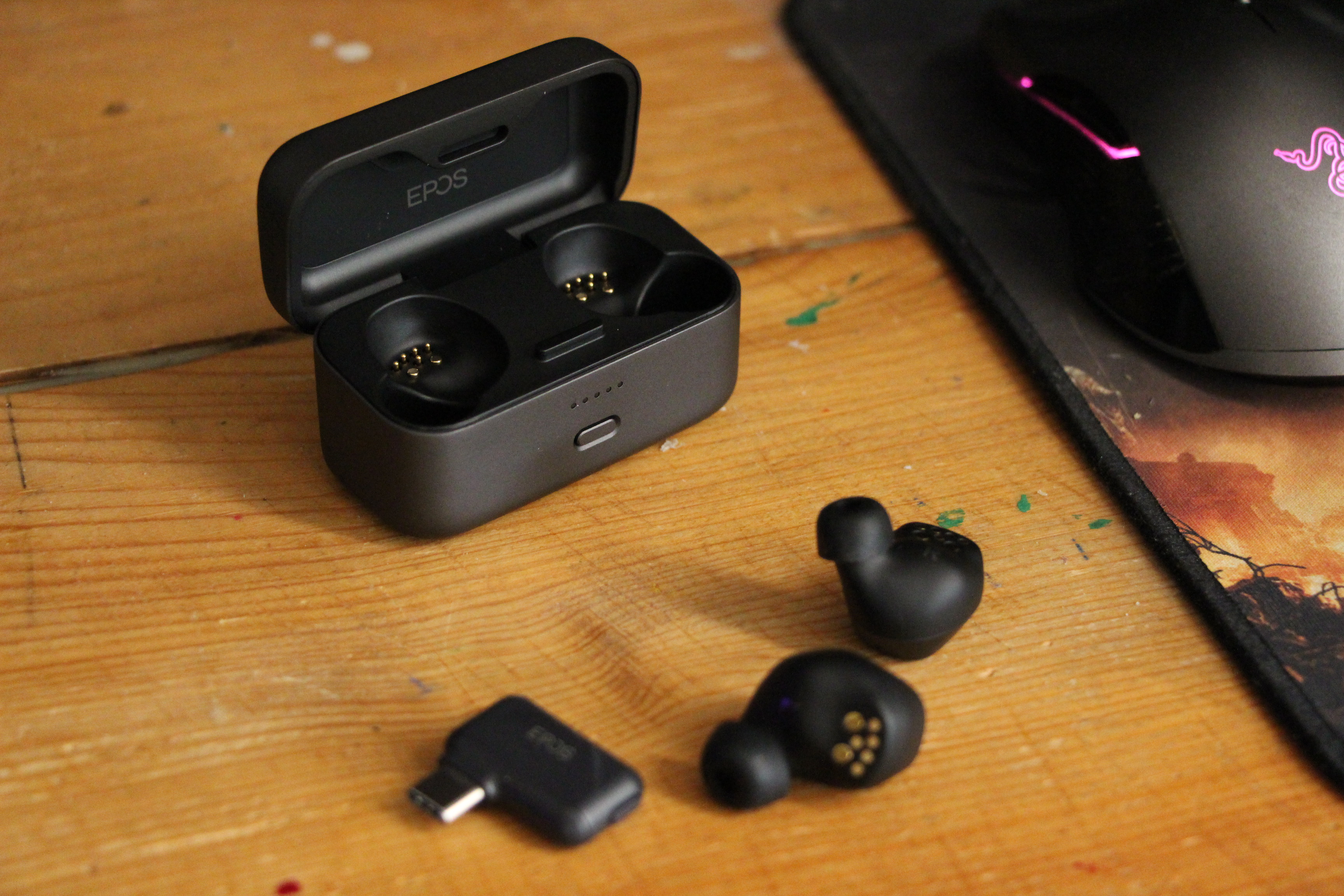Windows Central Verdict
The EPOS GTW 270 earbuds are a nice idea that eliminates the frustration of Bluetooth across a wide range of devices. While the soundscape is a little heavy on treble and mids out of the box, the headset is decently comfortable and handles deep bass well with good separation. A little more imagination could have elevated the overall product proposition, and I'd argue it's a little pricey. Still, it's a decent solution overall for those who are really fed up with Bluetooth earbuds.
Pros
- +
Great connectivity thanks to USB-C wireless
- +
Bluetooth 5.1 with apX support
- +
Some solid battery life
- +
Comfortable with good construction
Cons
- -
Nowhere to store the dongle, making it easily to misplace
- -
Soundscape isn't the best
- -
Treble and mids are a little hefty out of the box
Why you can trust Windows Central
The EPOS GTW 270 earbuds aim to solve a growing problem in our increasingly mobile-oriented gaming world: gaming audio on the go, across multiple devices. Many of today's consoles and laptops and phones support Bluetooth, but Bluetooth isn't always the best option, owing to its susceptibility to interference. What if you're also using your Bluetooth connection to hook up a gamepad for use in things like Xbox Cloud Gaming? Pairing a headset alongside it is only going to induce more latency into the mix, for example.
To that end, EPOS has come up with a novel solution that seems to have little competition in the space. This is the firm's GTW 270 earbuds set, giving you a USB-C dongle compatible with practically any Android device, laptop, and more for low-latency gaming audio on the go. For some very specific situations, these might earn a place among the best PC gaming headsets.
EPOS GTW 270: Price and Availability
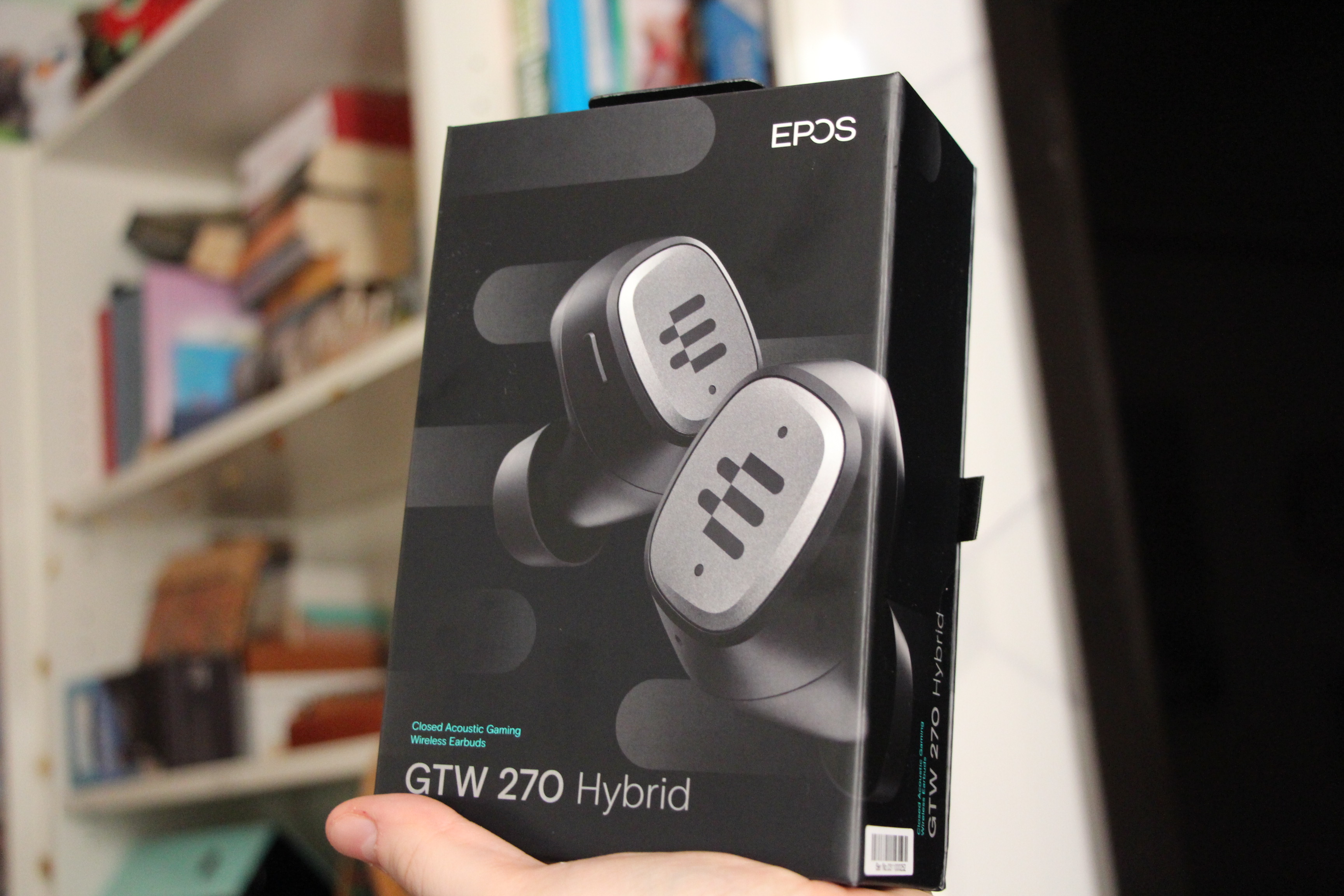
The EPOS GTW 270 gaming earbuds are available at shops like Best Buy and Amazon in the United States and other major markets, as well as EPOS' own website. Stock levels seem generally good, with some sites even offering lower prices than the RRP of $149.99.
EPOS GTW 270: Tech Specs
| Category | Spec | Header Cell - Column 2 |
|---|---|---|
| Connectivity | USB-C, USB-C to USB-A, Bluetooth 5.1 | Row 0 - Cell 2 |
| Compatibility | PC, Android, PlayStation 4, PlayStation 5, Nintendo Switch | Row 1 - Cell 2 |
| Features | 7.1 surround option, charge case, IPX 5 water resist | Row 2 - Cell 2 |
| Microphones | Dual internal mics | Row 3 - Cell 2 |
| Battery life | 5 hours listening, 20 hours carry case | Row 4 - Cell 2 |
| In the box | USB-C cable, USB-C to USB-A cable, USB-C dongle, charge case, earbuds, spare in-ear rubber inserts, dongle cover | Row 5 - Cell 2 |
| Price | $150 | Row 6 - Cell 2 |
EPOS GTW 270: The Good Stuff
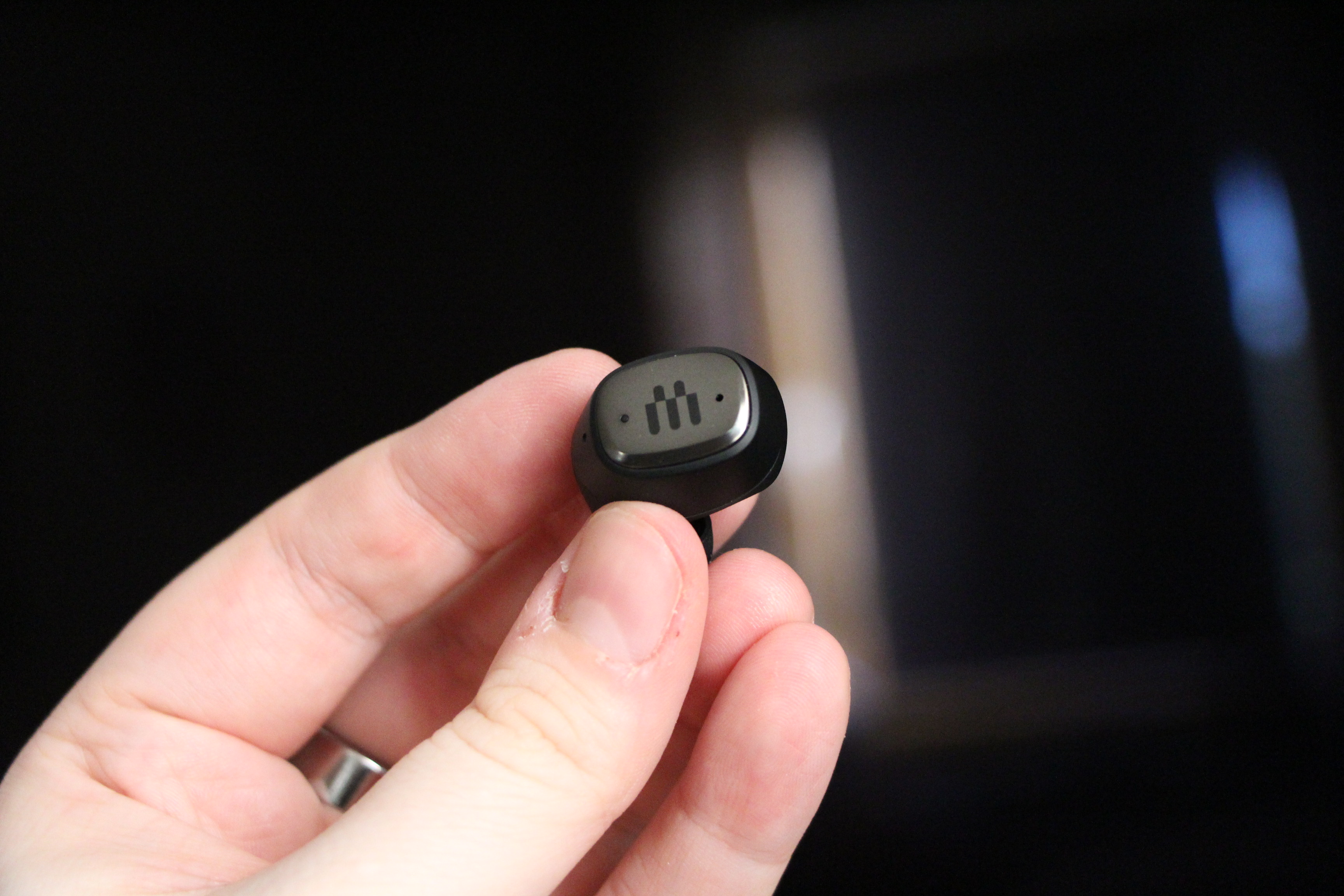
With this new headset, EPOS is hoping to tread new ground in a fairly busy space. A cursory glance on Amazon reveals something of an avalanche of earbuds of all shapes and sizes, going from $15 all the way up to $300 dollars, but I wasn't able to find any competitors doing what EPOS is doing with its GTW 270.
Where the GTW 270 stands apart is in its USB-C dongle. Using what EPOS dubs its "EPOS Low Latency tech," the headset can bypass its optional Bluetooth 5.1 apX connectivity for a more solid and stable traditional radio signal, which is far, far less susceptible to interference and latency issues that plague Bluetooth ... well, anything. We all know Bluetooth sucks, but this is one of the first earbuds sets on the market to actively admit it.
The GTW 270 from EPOS is a standard set of modern earbuds, complete with a carry case with 20 hours of battery storage and five hours of listening time on-board, complete with a USB-C dongle. The dongle is compatible with practically any device you can plug it into directly. Naturally, most Apple mobile devices don't have USB-C ports, although practically any Windows PC or Android tablet or phone will work right out of the box without extra fiddling.
You always have the option to fall back on Bluetooth if you have no other choice or simply don't want to use the dongle at any given time, but the USB-C connectivity is great for those who want that added reliability. I find Bluetooth is often particularly sucky on PCs and laptops. While podcasting on my Razer Blade 17 Pro, I found myself increasingly opting for these EPOS buds instead of my Galaxy Buds, purely on the basis of the USB-C connectivity. It's rock solid, completely stable, and utterly resistant to interference.
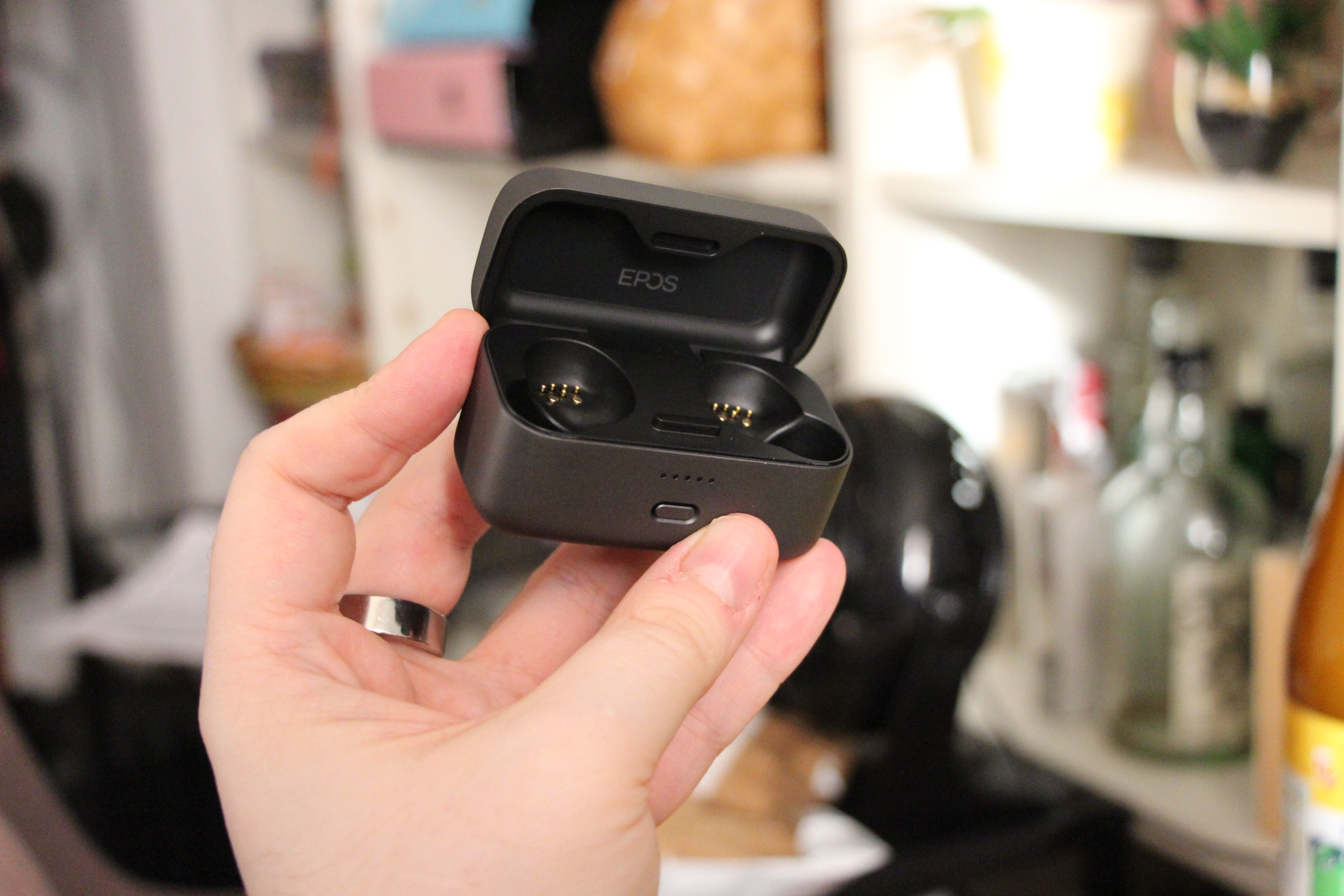
In the box, there are additional cables for charging up the dock, as well as a USB-A to USB-C female cable for connecting the USB-C receiver to laptops that don't have a port, or PlayStation consoles for example. Indeed, you can use this headset receiver with gaming consoles like the Nintendo Switch as well, although it doesn't work on Xbox owing to Microsoft's bespoke security chip requirements.
The headset also has some additional rubber inserts to fit the shape of your ear, and I found the product to be decently comfortable over long sessions even with my tiny ears. There's a single button on the left earbud that lets you adjust a wide array of media features such as playback controls and so on, and a pairing button is situated on the charge dock for hooking the headset up with Bluetooth connections if you need to.
The soundscape is inoffensive, but not exactly mind-blowing. It has some good separation though with decent bass and crisp highs. It also comes complete with optional virtual 7.1 surround which adds an extra dimension in shooters and other competitive games. Dual microphones also help you stay in contact with your comrades — they're serviceable, but don't expect to be creating content on them.
The build quality is decent too, which you'd probably hope for from a $149 product with a big name attached like EPOS. The metallic accents are a nice touch without being too "showy," and the construction of the charge dock has a good, compact feel with good density, providing some light water resistance and protection from fumbles. The GTW 270 is what I would describe as far from perfect, though.
EPOS GTW 270: The Bad Stuff
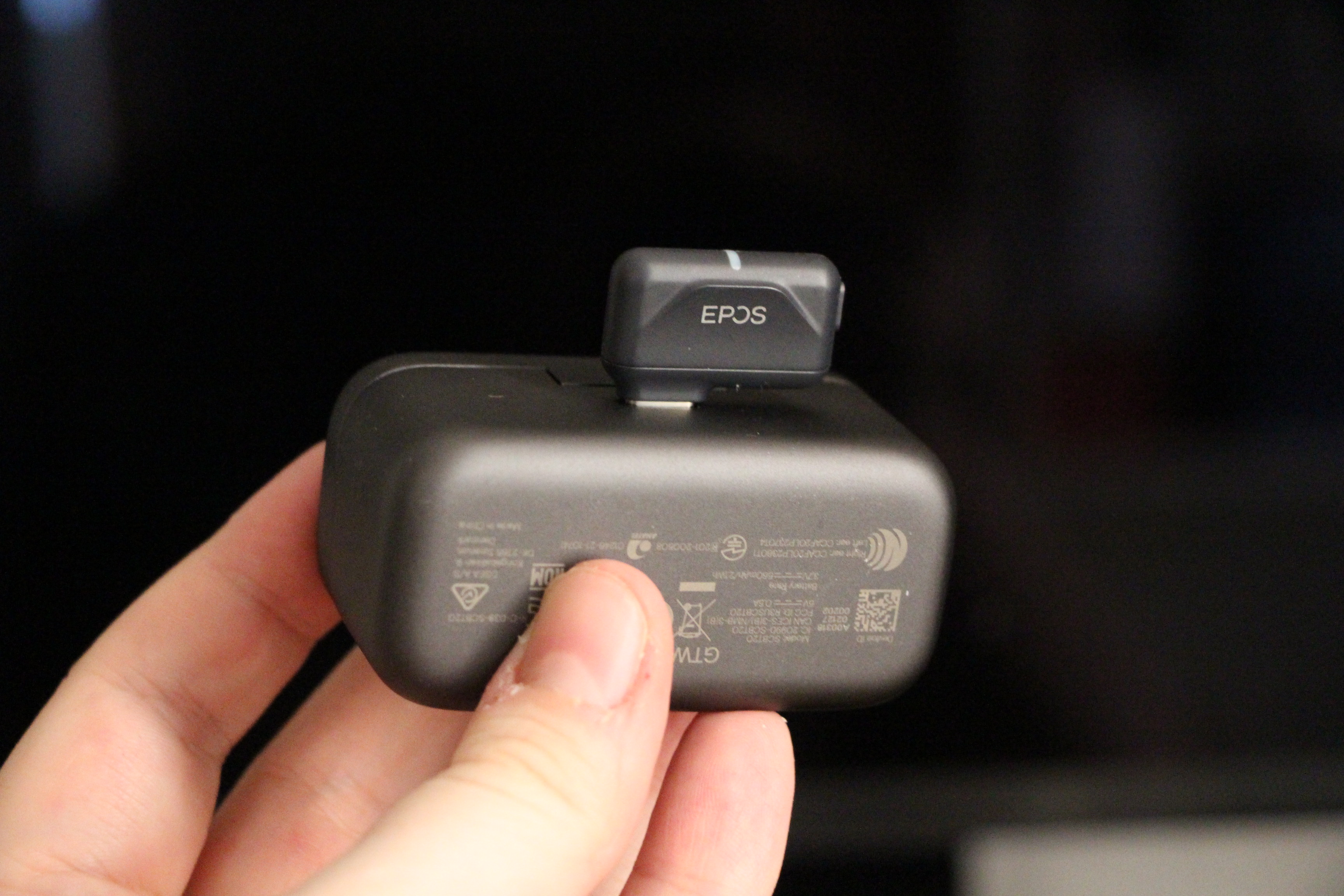
There are a few oddities with regard to this product. It's difficult to think of an alternative solution to the dongle, but it's quite large and sticks out quite literally like a sore thumb on any device you attach it to.
The charge dock is also a bit of an odd design. The shape is quite hefty and oddly heavy, probably owing to its metallic shell. Its pill-like design isn't the best to fit in a pocket if you intend to use these while on the move.
I initially thought the charging case was large to accommodate space to dock the dongle. I mean, it would make sense, right? If you're not using the dongle, stands to reason you might want to disconnect it and place it in the charging dock along with the earbuds. Sadly, there's no such feature for this. The only real option for keeping the dongle with the charge dock is to plug it into the charge port, which isn't exactly an elegant solution.
Out of the box, the treble and mids in the soundscape are also a bit overpowering at times, although overall, the sound profile is decent. Using the EPOS software on a PC, you can change the EQ wave to meet your needs, but there are no pre-sets that would make this function easier to use. Also, the fonts in the app are utterly tiny. On a 1080p screen, you'd need a magnifying glass to read some of the stuff in this app, which isn't just irritating from an accessibility perspective, but for practically anyone who doesn't have cybernetic zoom implants in their eye sockets.
EPOS GTW 270: Competition
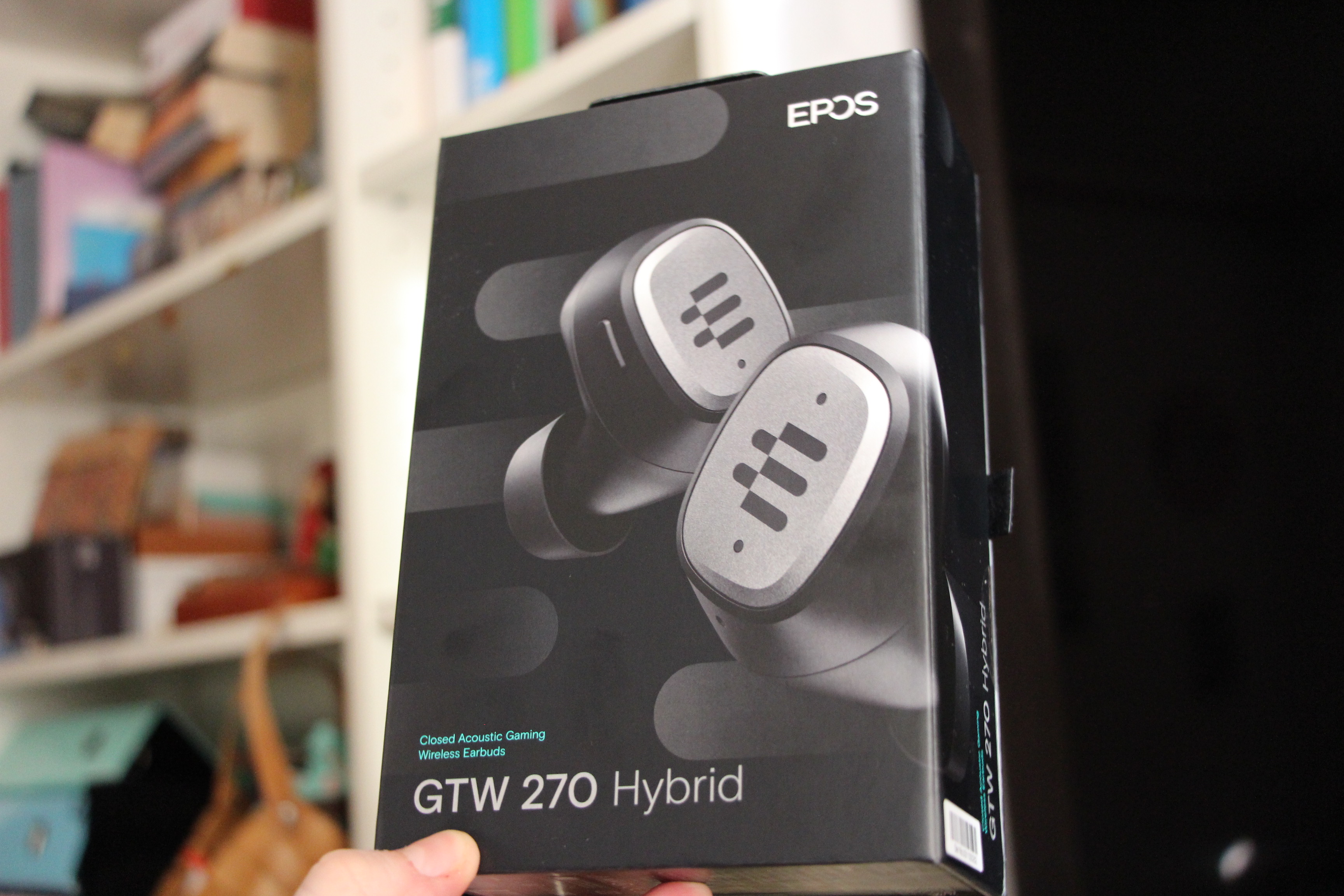
In this space, EPOS enjoys relatively little competition. I'm sure they exist out there somewhere, but I haven't been able to find a comparable product that is both USB-C and in the earbuds form factor, but there are a few traditional full headsets that have similar functionality.
The SteelSeries Arctis 1 for example are full over-ear headphones with a USB-C dongle for use on Android and Nintendo Switch. However, the USB-C dongle on this product is quite huge and wide, and would likely interfere with other ports on a laptop given its size. EPOS at least went with a smaller dongle that could be flipped around to position its larger side either upwards or downwards, whereas SteelSeries went with a USB-C bar that puts the port in the middle.
On the Bluetooth end, Razer's Hammerhead earbuds are arguably better in terms of raw audio quality, but then you're losing the USB-C dongle, which will beat the Razer option on many laptops or other devices with weak Bluetooth connectivity. Despite some flaws in the EPOS GTW 270, it stands out in a crowded market for its uniqueness.
EPOS GTW 270: Should you buy it?
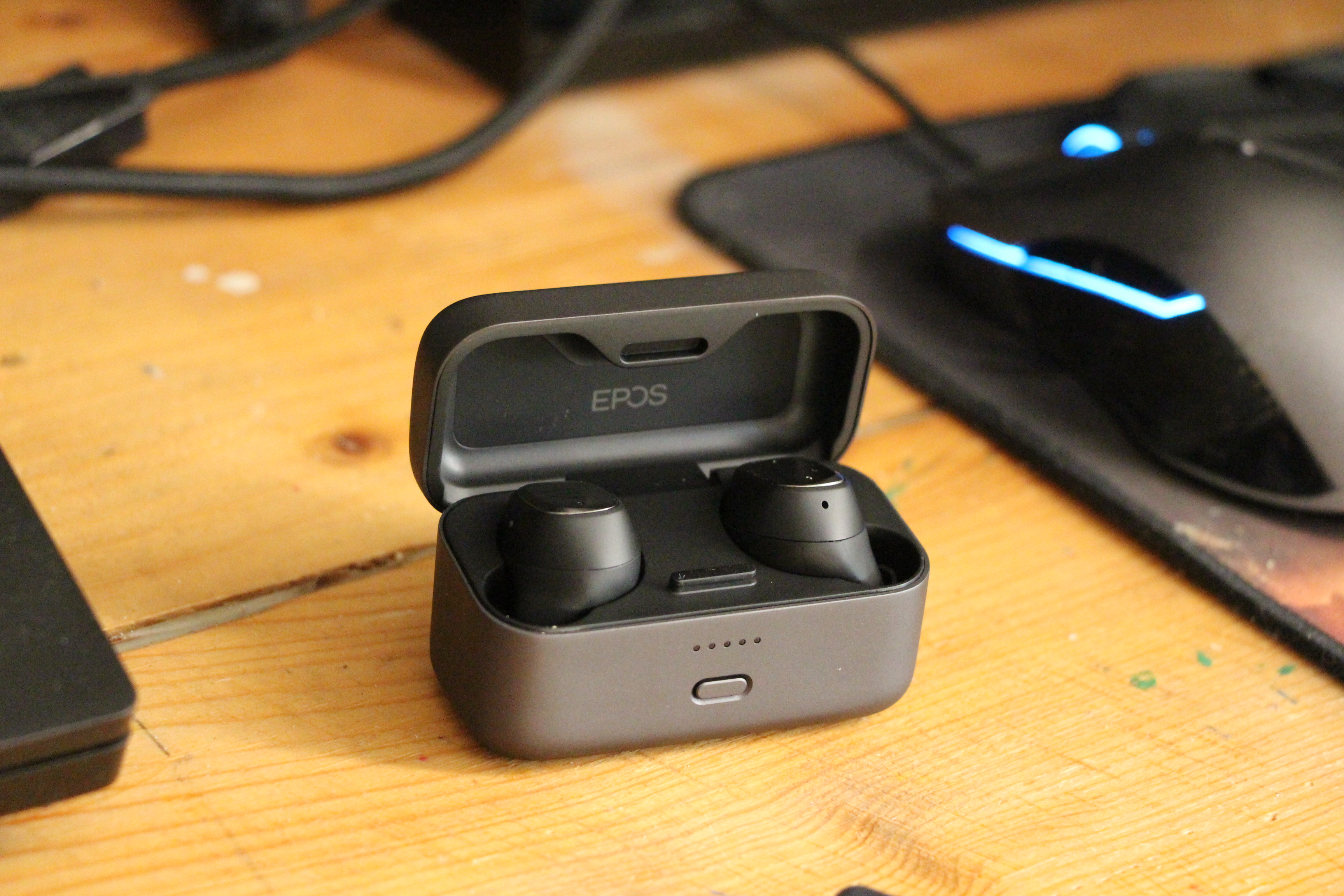
You should buy this if:
- You want some earbuds for your gaming life on PC and other devices without the hassle and unreliability of Bluetooth.
You should not buy this if:
- You don't plan to use the USB-C dongle all that much, since there are arguably better-sounding and cheaper Bluetooth-only options available.
While the EPOS GTW 270 isn't exactly ground-breaking in the sound department, its unique feature set gives it a unique place in a competitive market. The USB-C connectivity is undeniably great for use on a PC, whereas Bluetooth connectivity is often an afterthought on the part of some major laptop manufacturers.
The soundscape isn't the best out there, and the app quality leaves a lot to be desired. However, it has very rapidly replaced all of my Bluetooth earbuds for jumping into quick calls or doing podcasting on camera, owing to the reliability of its USB-C dongle. For some niche use cases, this might be exactly what you need in your gaming life, but there's a lot of room for improvement in future versions.
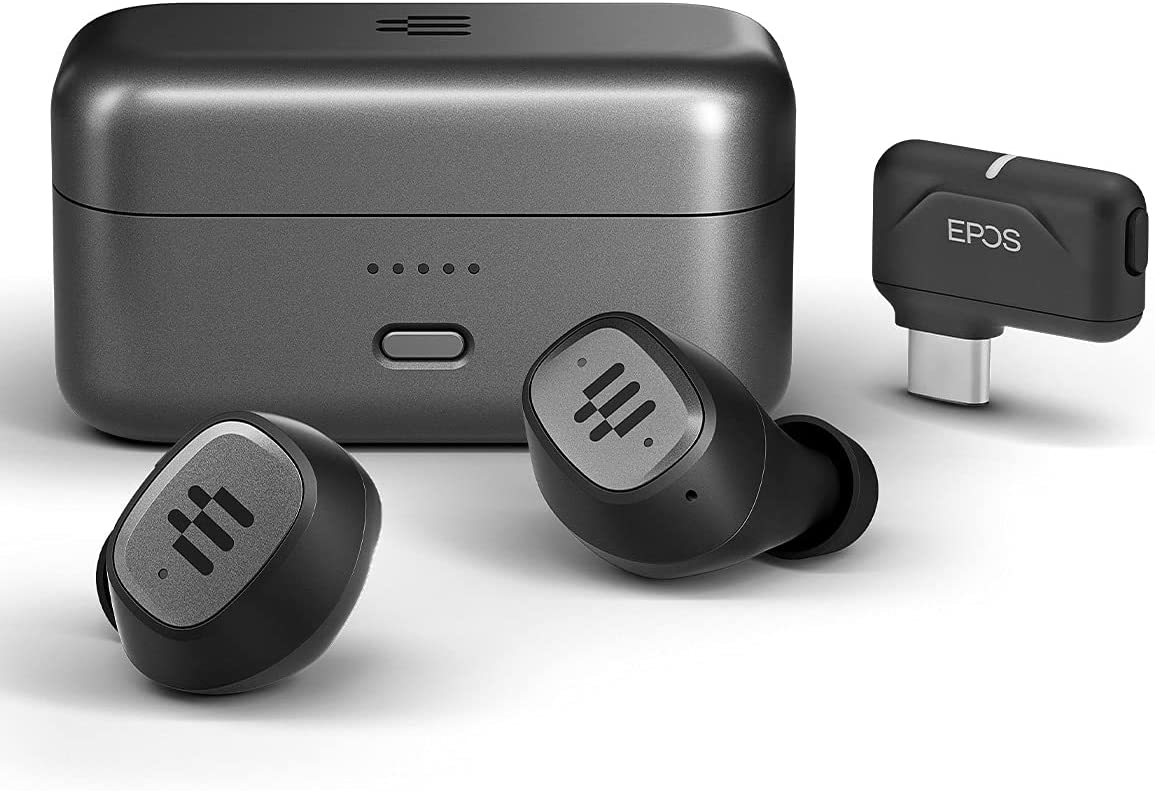
The EPOS GTW 270 is a unique earbuds offering in a busy market, offering to bypass the nightmares of Bluetooth for a traditional USB-C radio dongle that elevates it above the competition.

Jez Corden is the Executive Editor at Windows Central, focusing primarily on all things Xbox and gaming. Jez is known for breaking exclusive news and analysis as relates to the Microsoft ecosystem while being powered by tea. Follow on Twitter (X) and Threads, and listen to his XB2 Podcast, all about, you guessed it, Xbox!
